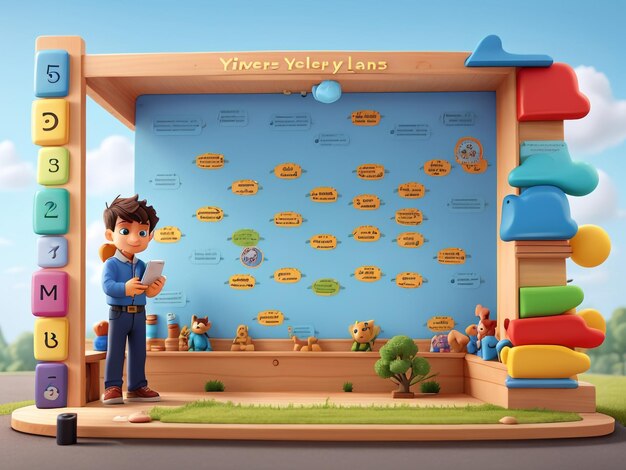MathPlayground is an educational website that offers interactive math games, logic puzzles, and learning tools. It is designed to help students (typically K-8) practice math concepts while having fun. The platform includes activities that focus on problem-solving, number sense, fractions, geometry, and more.
Here’s a detailed execution table for creating a platform like MathPlayground:
Table for “MathPlayground” Website Development & Execution:
| Stage | Task | Details/Execution Plan | Deadline | Assigned To |
|---|---|---|---|---|
| Pre-launch Planning | Content Research | Identify math topics by grade level and curriculum standards (K-8). | 3 months before | Curriculum Specialists |
| Game Content Creation | Design educational games for key math concepts (addition, geometry). | 3 months before | Game Designers | |
| User Research | Understand the target audience (students, teachers, parents) needs. | 3 months before | Marketing Team | |
| Platform Development | Website Framework | Build a website using HTML, CSS, JavaScript; ensure mobile compatibility. | 2.5 months before | Web Developer |
| Game Development | Develop or integrate interactive math games using HTML5/JavaScript. | 2 months before | Game Developers | |
| Backend Setup | Set up databases to track user progress and game stats (if applicable). | 2 months before | IT Team | |
| Create Learning Tools Section | Add features like virtual manipulatives (e.g., fraction bars, number lines). | 1.5 months before | Web Developer | |
| User Experience | Categorize Games by Grade and Topic | Organize games based on grade levels and specific math topics. | 1.5 months before | Web Developer/Content Team |
| Accessibility Features | Ensure the website is accessible to students with disabilities (e.g., screen readers, larger fonts). | 1 month before | Accessibility Team | |
| Progress Tracking for Teachers/Parents | Develop tools for teachers/parents to monitor students’ progress in various topics. | 1 month before | IT Team/Developer | |
| Security & Compliance | COPPA Compliance | Ensure that the platform is compliant with the Children’s Online Privacy Protection Act (COPPA). | Ongoing | Legal Team |
| Secure Data Encryption | Encrypt user data (if users register) and ensure privacy standards. | 1 month before | IT Team | |
| Content Management | Regular Game Updates | Update and add new math games to align with changing curriculum needs. | Weekly | Game Designers |
| Develop Lesson Plans for Teachers | Create downloadable lesson plans and worksheets that tie into the games. | 2 weeks before | Content Team | |
| Add Video Tutorials | Provide video tutorials explaining math concepts covered by games. | 2 weeks before | Content Team/Video Producer | |
| Launch | Website Go-live | Make the website publicly accessible for teachers, students, and parents. | Launch day | Web Developer |
| Post-launch Tasks | SEO Optimization | Optimize for search engines using keywords like “math games,” “educational tools.” | Ongoing | SEO Specialist |
| Social Media and Email Campaign | Promote the platform on social media, blogs, and teacher newsletters. | Ongoing | Marketing Team | |
| Monitor Website Performance | Track page load times, user engagement, and game popularity using analytics. | Ongoing | IT/Marketing Team | |
| Gather User Feedback | Collect feedback from teachers, students, and parents to improve the platform. | Monthly | Customer Service | |
| Maintenance & Bug Fixes | Continuously monitor the website for bugs, broken links, or other issues. | Ongoing | IT/Web Developer |
Detailed Execution Plan:
- Content Development: Begin by researching the math curriculum and identifying core topics for each grade level (K-8). Develop or integrate math games focused on these topics—like basic arithmetic, geometry, fractions, and word problems.
- Game Development: The games can be developed using HTML5 and JavaScript for interactive elements. You can either build them in-house or license games from existing educational software providers.
- Website Structure: The website should be simple, easy to navigate, and categorized by grade levels and topics to allow teachers and students to find specific content quickly. The site should be mobile-friendly since many users may access it on tablets or phones.
- Teacher & Parent Features: Add options for teachers or parents to track students’ progress on math games. This feature could require user accounts, where students’ performances on certain topics are tracked, and reports can be generated.
- Security & Compliance: Since the platform is aimed at children, it must comply with COPPA (Children’s Online Privacy Protection Act). The website should prioritize the protection of minors’ data, and if user registration is required, ensure secure encryption and parental consent where needed.
- User Engagement Tools: Include videos and interactive tools that help explain math concepts. This will provide deeper learning experiences for students who may struggle with math problems.
- Promotion: Marketing efforts should target schools, teachers, and parents through social media, educational forums, newsletters, and teacher blogs to promote MathPlayground.
- Post-launch: The platform needs regular updates to add new games or improve existing ones. It should continuously gather feedback from users to make necessary improvements to the platform and the quality of educational content.
By following the steps laid out in the table, a platform like MathPlayground can be successfully developed and maintained, offering a fun and educational experience for students while helping teachers and parents engage with children’s learning.

